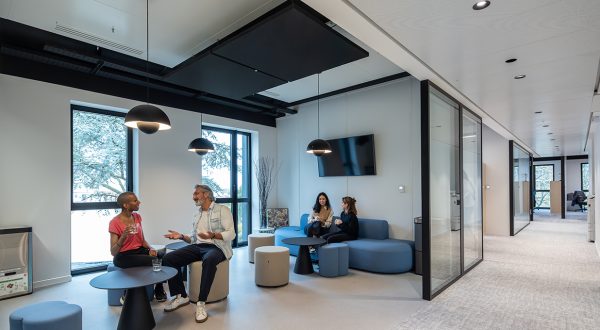The hospital, centrepiece of the healthcare system overhaul
Reading time: 4 min
The French healthcare system will have to overhaul its organisation to meet the expectations of users who aspire to more autonomy and support and of public officials keen to achieve greater overall efficiency,. The hospital’s importance, configuration and role are set to change considerably.
![]()
The diagnosis is now broadly accepted. The French healthcare system faces enormous challenges, first and foremost the aging of the population and its direct consequences – the increasing prevalence of chronic illness and multiple pathologies. These unprecedented challenges necessarily call the existing healthcare system into question.
At the heart of the system, “The hospital was a major source of progress in the last century. But its organisational model, which goes back to 1958, is powerless to respond efficiently and equitably to the future expectations of users and to the new economic realities facing the healthcare system,” says Loïc Chabanier, Healthcare IT Project and Strategy manager at the EY consulting firm.
Hospital reorganisation is a recurring theme in the strategic plans published by officials in recent years. It is again front and centre in the “Ma Santé 2022” plan launched in November 2018 with a budget line of €3.4 billion.
“One objective is to reduce the share of the hospital in overall care provision,” says Élisabeth Hachmanian, associate responsible for Public Sector and Healthcare Consulting at PwC. “The hospital, which was the centrepiece of the system, is set to become one part of the chain, with a clear repositioning of enhanced skills, in other words the most advanced medical skills, given the strong progress in artificial intelligence technologies.”
Towards better coordination
Medical centres will thus become “hubs” built around a core set of advanced expertise – the hospital itself – requiring suitable, state-of-the-art equipment and surrounded by a galaxy of local services dedicated to first aid, preventive medicine, rehabilitation and coordination linked to medical practitioners, nurses and other healthcare staff, health and social services, laboratory technicians and pharmacists.
“Hospitals will work with the healthcare providers within their areas,” says Mr. Chabanier. “The approach based on competition between hospitals and with private practices is a thing of the past. The healthcare sequencing and gradation concept now requires better coordination between facilities and removal of the separation between the private, public and social sectors.”
The goal is to facilitate the introduction of personalised, preventive and predictive medicine, among other things via the development of telemedicine; to improve the care pathway; and to pave the way for control of healthcare costs, notably by reducing the length of in-patient hospital stays.
The expanded use of outpatient care, a major economic goal to enhance the healthcare system’s efficiency, has become a de-facto national priority for the public officials. Currently 52% of surgical procedures are performed in this way and the goal is to raise that proportion to 66% by 2020.
Secure data sharing
But the two-pronged barrier removal and care pathway approach assumes that all the system’s participants can communicate on the basis of common standards and reliably and securely share data. The accelerated pace of digital transformation in healthcare facilities and the tightened requirements governing data structure and sharing are the core focus of the “HOP’EN” programme, the new five-year (2018-2022) hospital information system roadmap covering the entire country.
“The operation and organisation of hospital governance are more complex than those of a company.”
The hospital is a special centre for experimenting with advanced technologies, robotics and algorithms. They are primarily considered centres of innovation in serial care and improved management of healthcare facilities, but the development of digital technologies and artificial intelligence also raise legitimate questions regarding the role of human personnel in providing and supporting care.
“The operation and organisation of hospital governance are more complex than those of a company,” says Ms. Hachmanian. “The hospital is a distillation of social, political, cultural and organisational complexity, centred on serving the patient and the patient’s interest.”





